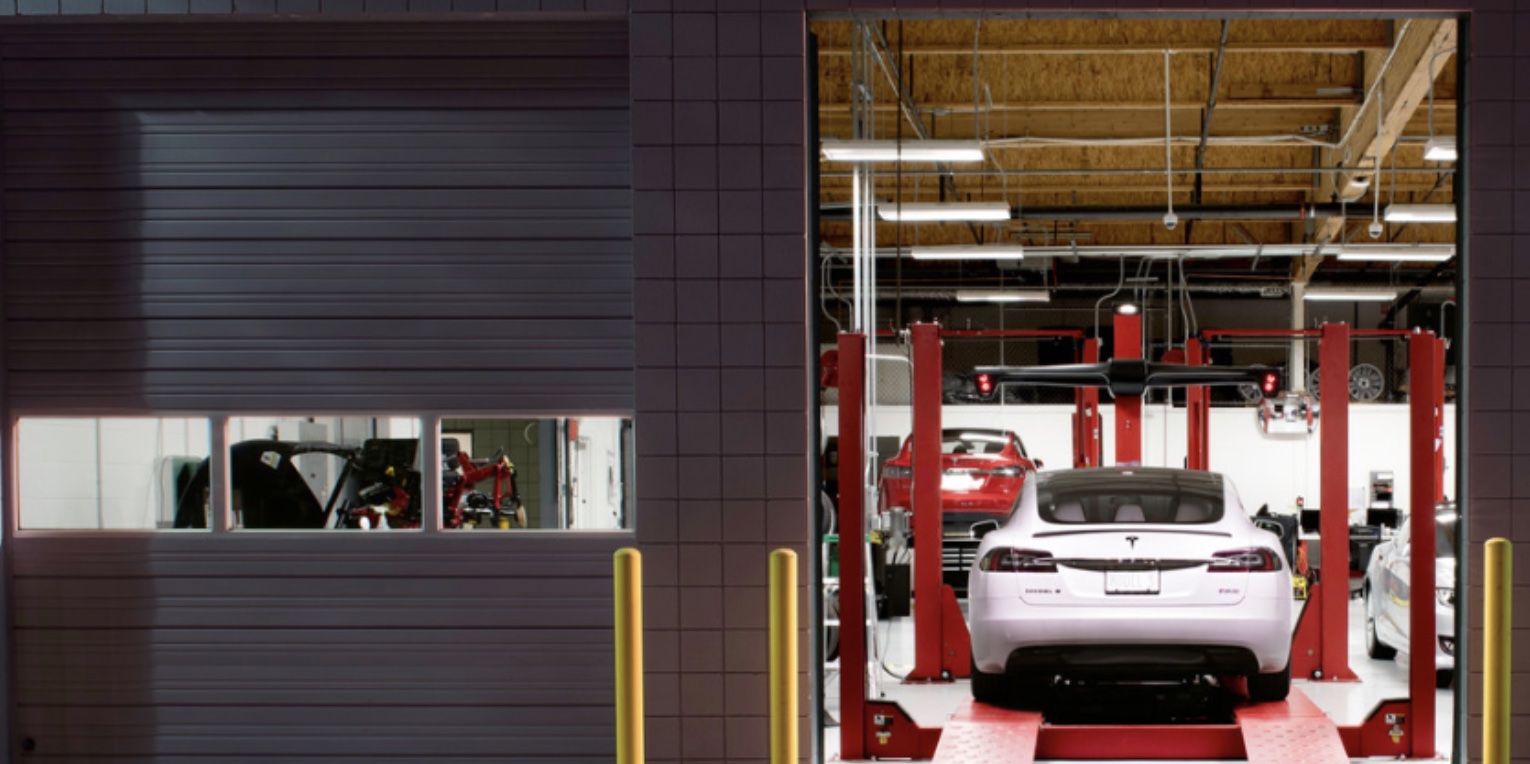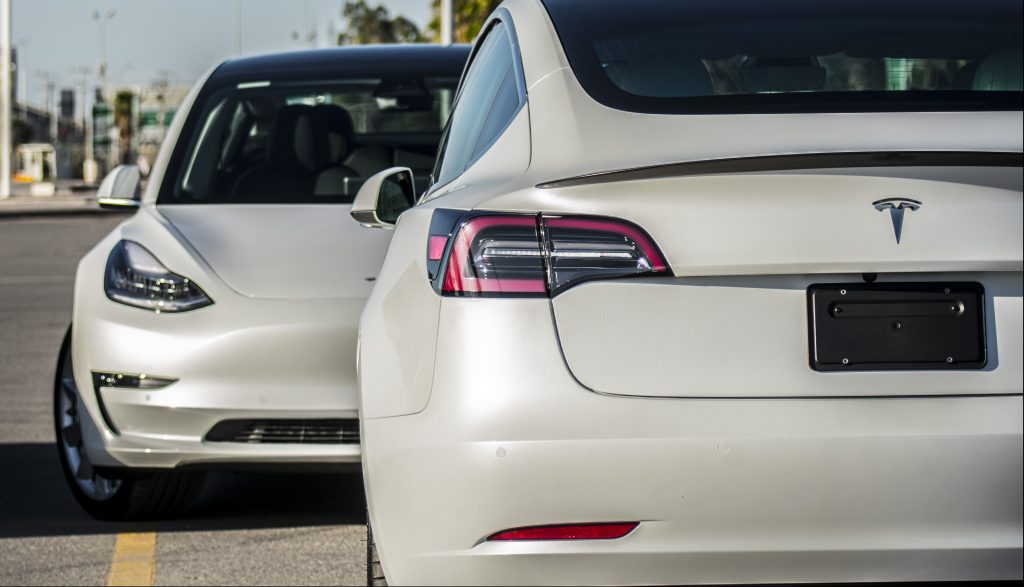

News
Opinion: Tesla has a service problem, and it needs to get addressed as soon as possible
Just recently, Tesla CEO Elon Musk was reminded of the fact that the company needs to expand its network of physical service centers. This is a point that needs to be highlighted these days, especially as Tesla’s vehicle production and deliveries reach new records. With Tesla poised to start producing vehicles by the millions in the near future, it is time for the company to acknowledge its service issues and ensure that its service network expansion sees the same level of dedication as its Supercharger Network ramp.
Tesla may be evolving into a robotics and AI company, but at the end of the day, it is also an electric car maker. And while EVs require far less service than their combustion engine-powered counterparts, they still need service and maintenance from time to time. This is especially true in cases of physical repairs such as the replacement of upper control arms, which are better suited for actual service centers.
It should be noted that while Tesla’s mobile service team is excellent and universally appreciated, they cannot address every single concern and repair. This could become a pain point for owners today, especially those who require repairs and maintenance that could not be accomplished by the mobile service team. Some Tesla owners have shared on social media that at times, they could end up traveling for hours just to get to the nearest service center. This system creates a negative ownership experience that could be detrimental to Tesla in the long run.

“Good Service” is Better Than “No Service” — At Least for Now
The company, after all, is producing vehicles at a scale that would have scared the pants off EV skeptics just a handful of years ago. Tesla will likely produce and deliver over a million vehicles per year within the next year or two, and by that time, the repair and maintenance needs of customers would likely be more substantial. A good portion of the company’s fleet would also be comprised of older vehicles then, some of which would likely require more maintenance and repairs.
The issue of the company’s lack of service centers has been brought up in past earnings calls, and most of the time, Tesla’s executives would respond by pointing to the growth of the company’s mobile service network, which could address an increasing number of repairs and issues from the comfort of owners’ homes or workplaces. Tesla also adopts the idea of the “best service” being “no service” at all. These goals would likely be attained in the future — especially as its factories become more automated and batteries become more advanced — but for now, Tesla has to focus on ensuring that existing customers, both new and old, are supported in the near-term.
Granted, the margin of error for physical service centers is substantial. There is a big human factor that determines if customers are provided a negative or positive experience during a service center visit, after all. This was highlighted recently by @JeffTutorials, the Model 3 owner Elon Musk recently responded to on Twitter, who reported that his experience with the company’s Princeton, NJ Tesla Service Center was nothing short of horrible due to the site’s staff. Such negative experiences could be prevented, however, provided that Tesla adopts strict policies for its service employees.

A $360 Billion Upside
Ultimately, there seems to be little downside to Tesla ramping its service centers at a similar pace as its Supercharger Network, which is already one of, if not the, best rapid charging system in the world. Apart from improving its customers’ overall ownership experience, expanding its service network would also allow Tesla to tap into a large, lucrative market. In Europe, for example, Tesla could breach the company car segment, which is worth $360 billion annually. Company cars are huge in Europe, with 60% of all new vehicle sales being made through corporate channels.
SAP SE, a German software maker and one of Europe’s largest tech companies, noted back in May that its employees are actually very interested in Tesla’s electric cars. And while it provides vehicles to its workers, SAP SE simply cannot commit to Teslas just yet because of the company’s poor service center network in the region. The same was true for chemicals giant BASF SE, which noted that it could not offer Teslas as a company car option for its 50,000 German employees until service centers are expanded.
It’s important to note is that improving service is not an “either/or” situation. Yes, mobile service could be ramped to address an increasing number of issues, but the company could also expand its physical service centers at the same time, and just as aggressively. Fortunately, Tesla does seem to have this in its plans, as confirmed by Elon Musk on Twitter. And if Tesla is indeed expediting its service center openings, then the company would effectively address one of its customers’ most persistent pain points.
Plus, in the long-term, wouldn’t service centers be a good site for Tesla Bots to practice their physical work capabilities?
Don’t hesitate to contact us with account tips. Just send a message to tips@teslarati.com to give us a heads up.

Elon Musk
Delaware Supreme Court reinstates Elon Musk’s 2018 Tesla CEO pay package
The unanimous decision criticized the prior total rescission as “improper and inequitable,” arguing that it left Musk uncompensated for six years of transformative leadership at Tesla.

The Delaware Supreme Court has overturned a lower court ruling, reinstating Elon Musk’s 2018 compensation package originally valued at $56 billion but now worth approximately $139 billion due to Tesla’s soaring stock price.
The unanimous decision criticized the prior total rescission as “improper and inequitable,” arguing that it left Musk uncompensated for six years of transformative leadership at Tesla. Musk quickly celebrated the outcome on X, stating that he felt “vindicated.” He also shared his gratitude to TSLA shareholders.
Delaware Supreme Court makes a decision
In a 49-page ruling Friday, the Delaware Supreme Court reversed Chancellor Kathaleen McCormick’s 2024 decision that voided the 2018 package over alleged board conflicts and inadequate shareholder disclosures. The high court acknowledged varying views on liability but agreed rescission was excessive, stating it “leaves Musk uncompensated for his time and efforts over a period of six years.”
The 2018 plan granted Musk options on about 304 million shares upon hitting aggressive milestones, all of which were achieved ahead of time. Shareholders overwhelmingly approved it initially in 2018 and ratified it once again in 2024 after the Delaware lower court struck it down. The case against Musk’s 2018 pay package was filed by plaintiff Richard Tornetta, who held just nine shares when the compensation plan was approved.
A hard-fought victory
As noted in a Reuters report, Tesla’s win avoids a potential $26 billion earnings hit from replacing the award at current prices. Tesla, now Texas-incorporated, had hedged with interim plans, including a November 2025 shareholder-approved package potentially worth $878 billion tied to Robotaxi and Optimus goals and other extremely aggressive operational milestones.
The saga surrounding Elon Musk’s 2018 pay package ultimately damaged Delaware’s corporate appeal, prompting a number of high-profile firms, such as Dropbox, Roblox, Trade Desk, and Coinbase, to follow Tesla’s exodus out of the state. What added more fuel to the issue was the fact that Tornetta’s legal team, following the lower court’s 2024 decision, demanded a fee request of more than $5.1 billion worth of TSLA stock, which was equal to an hourly rate of over $200,000.
Delaware Supreme Court Elon Musk 2018 Pay Package by Simon Alvarez
News
Tesla Cybercab tests are going on overdrive with production-ready units
Tesla is ramping its real-world tests of the Cybercab, with multiple sightings of the vehicle being reported across social media this week.

Tesla is ramping its real-world tests of the Cybercab, with multiple sightings of the autonomous two-seater being reported across social media this week. Based on videos of the vehicle that have been shared online, it appears that Cybercab tests are underway across multiple states.
Recent Cybercab sightings
Reports of Cybercab tests have ramped this week, with a vehicle that looked like a production-ready prototype being spotted at Apple’s Visitor Center in California. The vehicle in this sighting was interesting as it was equipped with a steering wheel. The vehicle also featured some changes to the design of its brake lights.
The Cybercab was also filmed testing at the Fremont factory’s test track, which also seemed to involve a vehicle that looked production-ready. This also seemed to be the case for a Cybercab that was spotted in Austin, Texas, which happened to be undergoing real-world tests. Overall, these sightings suggest that Cybercab testing is fully underway, and the vehicle is really moving towards production.
Production design all but finalized?
Recently, a near-production-ready Cybercab was showcased at Tesla’s Santana Row showroom in San Jose. The vehicle was equipped with frameless windows, dual windshield wipers, powered butterfly door struts, an extended front splitter, an updated lightbar, new wheel covers, and a license plate bracket. Interior updates include redesigned dash/door panels, refined seats with center cupholders, updated carpet, and what appeared to be improved legroom.
There seems to be a pretty good chance that the Cybercab’s design has been all but finalized, at least considering Elon Musk’s comments at the 2025 Annual Shareholder Meeting. During the event, Musk confirmed that the vehicle will enter production around April 2026, and its production targets will be quite ambitious.
News
Tesla gets a win in Sweden as union withdraws potentially “illegal” blockade
As per recent reports, the Vision union’s planned anti-Tesla action might have been illegal.

Swedish union Vision has withdrawn its sympathy blockade against Tesla’s planned service center and showroom in Kalmar. As per recent reports, the Vision union’s planned anti-Tesla action might have been illegal.
Vision’s decision to pull the blockade
Vision announced the blockade in early December, stating that it was targeting the administrative handling of Tesla’s facility permits in Kalmar municipality. The sympathy measure was expected to start Monday, but was formally withdrawn via documents sent to the Mediation Institute and Kalmar Municipality last week.
As noted in a Daggers Arbete report, plans for the strike were ultimately pulled after employer group SKR highlighted potential illegality under the Public Employment Act. Vision stressed its continued backing for the Swedish labor model, though Deputy negotiation manager Oskar Pettersson explained that the Vision union and IF Metall made the decision to cancel the planned strike together.
“We will not continue to challenge the regulations,” Petterson said. “The objection was of a technical nature. We made the assessment together with IF Metall that we were not in a position to challenge the legal assessment of whether we could take this particular action against Tesla. Therefore, we chose to revoke the notice itself.”
The SKR’s warning
Petterson also stated that SKR’s technical objection to the Vision union’s planned anti-Tesla strike framed the protest as an unauthorized act. “It was a legal assessment of the situation. Both for us and for IF Metall, it is important to be clear that we stand for the Swedish model. But we should not continue to challenge the regulations and risk getting judgments that lead nowhere in the application of the regulations,” he said.
Vision ultimately canceled its planned blockade against Tesla on December 9. With Vision’s withdrawal, few obstacles remain for Tesla’s long-planned Kalmar site. A foreign electrical firm completed work this fall, and Tesla’s Careers page currently lists a full-time service manager position based there, signaling an imminent opening.








